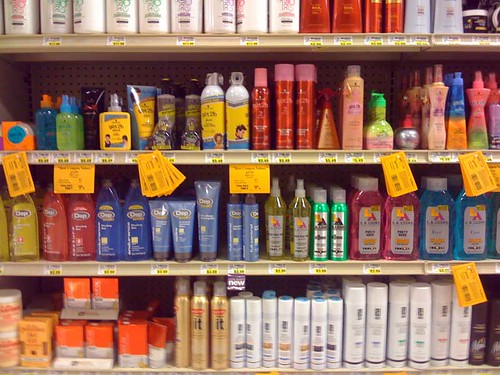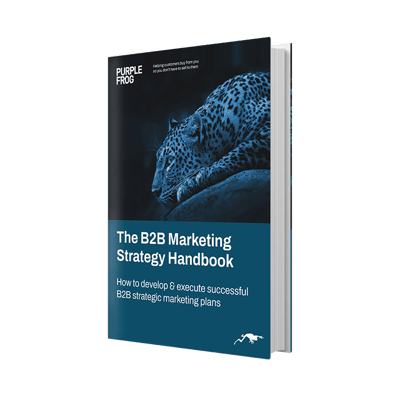Customer choice - how offering more can get you less

When a visitor to your website doesn’t know exactly what they want, it’s important to offer them as much choice as possible, right?
After all, their ideal product might be one they haven’t seen yet. Well, there is a bit of a problem with this idea. If you give too much customer choice they can get stuck trying to decide between options, an idea known as the paradox of choice.
Paralysis through choice
The idea behind giving people choice is that they want the best they can get. They have a problem they want solved: they need a pair of shoes to go with a particular dress, a coffee table to go in a newly decorated lounge, or a mothers’ day present for next week. They want a product that solves their problem perfectly and are happy to spend time searching for that solution. Or are they?
Can you remember the last time you were in a similar situation? Did you enjoy spending an evening frantically searching around various sites to find that pair of shoes, that TV, or that present? Or did you find that having such a wide range of options made it difficult to chose between them?
If you did find it difficult to choose between such a wide range of options then your customers feel that same kind of paralysis when they’re on your website. This means that they might not be making that all important change from visitors into paying customers.
Striking the balance
The way to get around this is to give enough customer choice so that they are likely to find an adequate solution to their problem, but not so much that they are paralysed by choice.
Did we just say adequate, not perfect? Yep. Although the majority of people may think they want to find the perfect solution, in may cases they will go with a solution that is adequate but easy to find rather than persevere in finding that perfect solution. How many times have you thought “that’s good enough” and then bought the product? Your customers think in exactly the same way.
Give people what they might want - and nothing else
One easy way of stopping people having too much choice is... well, to reduce the amount of choice they have. In 2010, Proctor and Gamble reduced their Head & Shoulders range from 26 products down to 15 and saw a 10% rise in sales. When the Golden Cat company stopped making their 10 worst-selling types of cat litter (you can buy ten types of cat litter?) their profits rose by 87%. Offer 10 types of cat litter or 26 types of shampoo and the result is the same: choice paralysis.

49 types of hair product in one aisle. Guess which one the writer of this article bought?
That’s right, none of them.
Ben Prober started his chain of women’s shoe shops in the US in the 1950s. He was successful not because he stocked the biggest brands or had the greatest range, but because he asked a question. When women had tried on two pairs of shoes and wanted to try on another, Ben would ask “Of course madam. And which pair would you like me to take away?” He had learned that when people are asked to choose between two pairs of shoes, it was easy. But when they had to choose between three different types of shoe they had much more trouble making a decision and often ended up leaving with nothing.
So how can we reduce the number of products people are seeing? Make sure you don’t clutter your product page up with accessory products, related products, products on the same offer, and “people also bought...” products. Choose one, maybe two of these options - whichever will be most likely to increase your returns. Don’t display ten different products for each set of options. Show three or four, and make the images bigger. Make your product pages online versions of Ben Prober.
Categorisation
You can also help people by making sure your categories work hard. If you have 600 products in 10 categories and your competitor had 400 products in 20 categories who is most likely to make more money? You may have the choice that makes it easier to find their perfect solution, but your competitor makes it easy for their customers to tell products apart and therefore have a better choosing experience. This is because your competitor is presenting them with a larger range at the category level, where customers know what category the product they want is in, so that part isn’t really a choice for them.
To make sure your customers don’t get choice paralysis, make your categories work hard for you. Have as many as seems sensible, so that people have smaller numbers of products to choose from in each category. You should also make sure each products are in all categories that make sense, not just one. This doesn’t help with choice paralysis, but it does make finding that product easier for people.
Provide context
Context is important because it is the environment that people make decisions in, so providing the right kind of context can help people to make a decision instead of experiencing choice paralysis.
If you use your suppliers’ standard copy and images you’re only giving your visitors as much context as they would find anywhere else on the web. But if you give them extra images, describe the benefits of buying a particular product or the situation it can help you out in, maybe even make a short video about it, then you are providing context.
A good example is All Star Converse, one of the most famous shoes around. Everyone who stocks them talks about the features and history, so talking about their history isn’t going to make you stand out from the crowd or make visitors’ decisions easier. Very provide similar information, but they go a few steps further. They talk about how versatile Converse are, what to wear them with, and the different colours they come in. This gives visitors much more context around whether Converse will go with their wardrobe, making their buying decision easier.
Helping your customers make choices
The best way to help your customers to not experience choice paralysis is to help them. Make their lives easier, guide them well, and they will reward you by spending their money. For help structuring your online store and ensuring categories are set-up correctly for your products, call Purple Frog on 01844 295170.
Ben Morel
More blog posts
Getting more people to spend the night with you
Destination marketing success Whether we think we are or not, people are creatures of habit and no less so when it comes to...Are you a hedgehog or a fox?
We believe that everything is routed in a big idea, that success can be achieved by following a big idea, by remaining focused...




